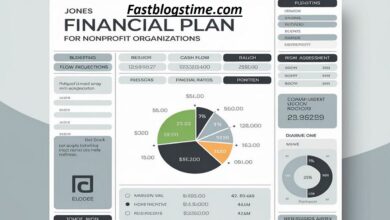
In today’s fast-paced business environment, understanding performance metrics is crucial for making informed decisions. One such essential metric is “YoY,” which stands for “Year Over Year.” This article delves into what YoY means, its significance, and how businesses can leverage this metric for growth and strategic planning.
What is YoY?
Year Over Year (YoY) is a financial metric used to compare the performance of a particular variable over two time periods, usually one year apart. For instance, if a company’s revenue in 2023 is $1 million, and it was $800,000 in 2022, the YoY growth is calculated as:
YoY Growth=(2023 Revenue−2022 Revenue2022 Revenue)×100\text{YoY Growth} = \left( \frac{\text{2023 Revenue} – \text{2022 Revenue}}{\text{2022 Revenue}} \right) \times 100YoY Growth=(2022 Revenue2023 Revenue−2022 Revenue)×100
In this example, the YoY growth would be 25%. This metric is widely used because it provides a clear view of performance trends over time, helping businesses assess their progress.
The Importance of YoY Analysis
Benchmarking Performance
YoY analysis allows businesses to benchmark their performance against previous years; by examining how sales, profits, or other key metrics change, companies can identify whether they are on track to meet their goals. This retrospective view is invaluable for setting realistic future targets.
Identifying Trends
A significant advantage of YoY comparisons is the ability to identify trends. If a company consistently shows positive YoY growth, it indicates a strong upward trajectory. Conversely, declining YoY figures may signal potential issues that must be addressed promptly. For example, a retail business experiencing a YoY decrease in sales might investigate factors such as changing consumer preferences or increased competition.
Seasonal Adjustments
Many businesses experience seasonal fluctuations in sales. YoY analysis helps to smooth out these variations. Companies can gain insights that seasonal patterns might obscure by comparing similar periods across different years. For instance, a company may have high sales in December due to the holiday season. Still, a YoY analysis can show whether the overall trend is positive or negative when comparing December 2023 to December 2022.
Informed Decision-Making
Decision-making is often challenging, especially in uncertain economic climates. YoY data provides a solid foundation for strategic decisions. Businesses can use YoY metrics to allocate resources, plan marketing campaigns, or invest. For example, a tech company may invest more in R&D if its YoY growth in technology sales indicates a strong market demand.
Communicating Success
For stakeholders, investors, and employees, YoY growth is a straightforward way to communicate a company’s performance. A positive YoY figure can boost investor confidence, attract new customers, and motivate employees. Regularly sharing YoY metrics in reports or presentations can foster stakeholder transparency and engagement.
Calculating YoY: A Step-by-Step Guide
Calculating YoY metrics is relatively straightforward. Here’s a step-by-step guide to ensure accurate calculations:
Step 1: Gather Data
Collect the data for the metric you want to analyze for the two periods. This could include revenue, profit, customer numbers, etc.
Step 2: Apply the Formula
Use the YoY growth formula mentioned earlier:
YoY Growth=(Current Year−Previous YearPrevious Year)×100\text{YoY Growth} = \left( \frac{\text{Current Year} – \text{Previous Year}}{\text{Previous Year}} \right) \times 100YoY Growth=(Previous YearCurrent Year−Previous Year)×100
Step 3: Analyze the Result
Interpret the result. A positive percentage indicates growth, while a negative percentage signifies a decline.
Step 4: Contextualize the Findings
Consider external factors that may have influenced the results. Economic conditions, industry trends, and competitor actions can all play a role.
Common Pitfalls in YoY Analysis
While YoY analysis is a powerful tool, it’s essential to avoid common pitfalls:
Ignoring External Factors
Changes in the economic environment, industry standards, or regulatory changes can significantly impact YoY comparisons. Always consider these factors when interpreting results.
Focusing Solely on Short-Term Trends
Businesses sometimes focus too much on short-term YoY trends and ignore longer-term patterns. A single year’s data might not provide a complete picture, so it’s vital to analyze data over multiple years.
Failing to Adjust for Seasonality
As mentioned, seasonal businesses must adjust for seasonal variations. Comparing December sales from one year to December sales from another year can be misleading without this context.
Overemphasizing Percentage Growth
A high YoY percentage growth in a small company may not be as significant as a smaller percentage growth in a larger, more established company. Always consider the absolute figures along with the percentages.
Practical Applications of YoY Analysis
Businesses across various sectors use YoY metrics to inform their strategies. Here are a few practical applications:
Retail Sector
Retailers often use YoY analysis to assess sales performance, especially during key shopping seasons. By analyzing YoY growth, retailers can determine the effectiveness of their promotional strategies and inventory management.
Technology Companies
In the tech industry, YoY growth is critical for understanding product adoption rates and market share. Companies often look at YoY data to guide their research and development investments, ensuring they remain competitive.
Financial Services
Financial institutions frequently use YoY metrics to evaluate loan growth, customer acquisitions, and portfolio performance. This data helps in risk assessment and resource allocation.
Healthcare Industry
Healthcare organizations utilize YoY comparisons to monitor patient volume, treatment outcomes, and operational efficiency. This analysis is crucial for improving patient care and optimizing resources.
E-commerce
E-commerce businesses analyze YoY growth to gauge the effectiveness of marketing campaigns and customer retention strategies. A consistent upward trend in YoY sales can validate their approach to customer engagement.
Conclusion
Understanding YoY is essential for any business aiming for sustainable growth. By leveraging YoY analysis, companies can benchmark their performance, identify trends, and make informed decisions that propel them forward. While it’s a powerful metric, using it with other indicators and contextual factors is important to gain a holistic view of performance.
In summary, incorporating YoY metrics into your business strategy not only aids in tracking growth but also empowers you to adapt and thrive in a competitive landscape. As you continue to explore YoY analysis, remember that the key to success lies in understanding the story behind the numbers and using that insight to shape your future.
May Also Read: Exploring Wuvisaaft: The Future of Digital Innovation




